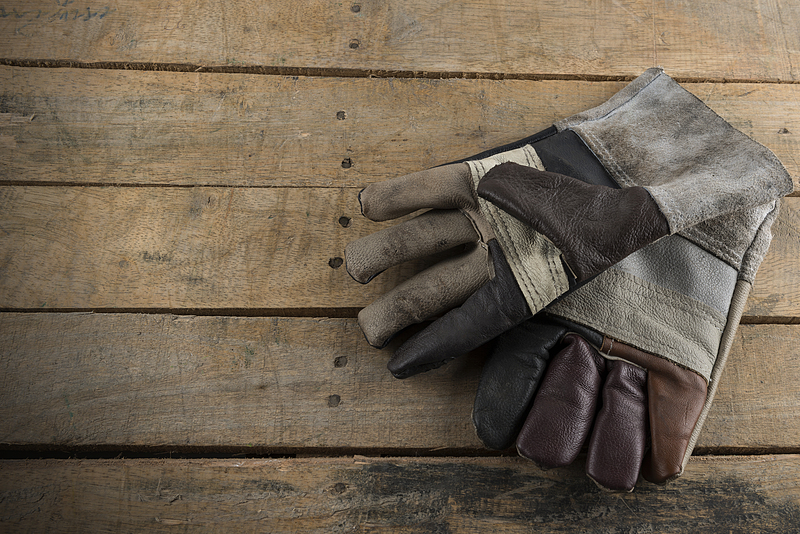The Role of Body Mechanics in Kinetic Lifting: Fundamentals, Principles, and Best Practices
Kinetic lifting is more than simply picking up heavy objects; it is a complex interplay of body mechanics, muscle power, and movement efficiency. Understanding and applying proper body mechanics in kinetic lifting is essential not only for maximizing performance but also for minimizing the risk of injury. This comprehensive article delves into the pivotal role of body mechanics in kinetic lifting, exploring key principles, techniques, safety considerations, and tips for individuals of all levels.

Understanding Body Mechanics in Kinetic Lifting
Body mechanics refers to the way we move during activity, encompassing the posture, positioning, and use of muscle groups required to perform tasks efficiently and safely. In the context of kinetic lifting, proper body mechanics are essential for executing lifts with optimal power, balance, and safety.
What Is Kinetic Lifting?
- Kinetic lifting involves any active physical movement where objects are raised, lowered, or carried using body motion.
- It may be seen in weightlifting sports, everyday manual labor, and rehabilitation exercises.
- The aim is to harness kinetic energy--the energy of motion--in a way that is efficient and reduces the likelihood of musculoskeletal strain.
Why Body Mechanics Matter in Lifting
In kinetic lifting, body mechanics play a crucial role by:
- Reducing stress on muscles and joints for long-term joint health
- Maximizing lifting power through better energy transfer and muscle activation
- Preventing injuries such as hernias, back strains, and ligament tears
- Improving lifting technique and efficiency, allowing for heavier or more repetitions
Key Principles of Body Mechanics in Kinetic Lifting
Whether you are a professional athlete, a warehouse worker, or fitness enthusiast, the fundamentals of safe lifting stay the same. By adhering to proven body mechanics, you can enhance performance and drastically curb injuries.
1. Neutral Spine Alignment
One of the most critical elements of proper body mechanics in kinetic lifting is maintaining a neutral spine. The spine's natural curves (cervical, thoracic, lumbar) should be preserved while lifting.
- Avoid rounding your back, as this places enormous stress on vertebral discs.
- Keep your back straight and chest lifted, engaging your core muscles for stability.
2. Engagement of Core Musculature
Strong core activation is non-negotiable in kinetic lifting. The core, consisting of abdominal, oblique, and lower back muscles, supports the spine and transfers energy from the lower body to the upper body.
- Brace your core before and during the lift by drawing your belly button inward and tightening abdominal muscles.
- This action helps stabilize the pelvis and spine, protecting against excess twisting or bending.
3. Hip Hinge Movement
The hip hinge is a foundational movement in effective kinetic lifting, particularly for heavy objects.
- Bend primarily at the hips, not the waist, keeping knees slightly bent and ensuring your weight stays in your heels.
- This movement activates the glutes and hamstrings, our strongest muscles, while offloading the lower back.
4. Proximity of Load
One of the most overlooked yet simple principles is keeping the load close to your body.
- Hold objects as close as possible to your torso for maximum mechanical advantage and control.
- This reduces torque and undue stress on the lower back.
5. Proper Foot Placement
Foot positioning is crucial for balance in kinetic lifting.
- Set your feet shoulder-width apart for a stable base of support.
- Point your toes slightly outward for better squat depth and hip engagement.
How Poor Body Mechanics Cause Injury in Kinetic Lifting
Neglecting the right body mechanics can have severe health consequences, especially for individuals who frequently perform kinetic lifts--whether in sports, at the gym, or in occupational settings. Here are some common injuries linked to improper lifting mechanics:
- Lower back strains and herniated discs caused by rounding the spine
- Knee ligament injuries from lack of hip hinge and overuse of knees
- Shoulder impingement from reaching or jerking loads away from the body
- Wrist and elbow tendinitis from poor gripping technique
Implementing Effective Body Mechanics: Step-by-Step Approach
To help you apply the principles of body mechanics for kinetic lifting effectively, here's a systematic approach:
Step 1: Assess the Load and Plan the Lift
- Test the object's weight before lifting to ensure it is manageable.
- Plan your route, removing obstacles, and know where you will set the object down.
Step 2: Prepare the Body
- Stand close to the object with feet shoulder-width apart.
- Bend at your hips and knees, not the back, to squat down to the load's level.
- Keep your chest up and directly over your hips.
Step 3: Grip and Lift Safely
- Grasp the object securely with both hands, palms facing you or the sides of the load as appropriate.
- Engage your core tightly, squeeze your shoulder blades slightly together.
- Drive through your heels and extend your hips and knees in one coordinated motion, maintaining a neutral spine.
Step 4: Hold and Move
- Keep the object close to your body at chest or waist height.
- Avoid twisting your torso; turn with your feet if a change of direction is necessary.
- Take small steps and maintain balance while walking with the load.
Step 5: Set Down Safely
- Lower the load by bending at the hips and knees, not the waist.
- Continue to use core strength and maintain a neutral spine as you release the object.
Body Mechanics and Kinetic Lifting Techniques in Sports & Fitness
Professionals and athletes have developed specialized forms of lifting that draw on advanced body mechanics. Some popular examples include:
- Olympic lifts (e.g., the clean and jerk, snatch)
- Powerlifting moves (deadlift, squat, bench press)
- Kettlebell swings and Turkish get-ups
Olympic Weightlifting
Every phase of an Olympic lift--from initial grip to the explosive drive and catch--relies on precisely sequenced kinetic movement. Weightlifters receive extensive coaching on proper footwork, hip drive, and spinal alignment to safely hoist maximal loads overhead.
Powerlifting
In powerlifting, the deadlift is perhaps the most iconic test of both sheer strength and textbook body mechanics. Lifters must maintain core tension, hip hinge, and perfect leverage to avoid catastrophic injuries while lifting substantial weight.
Functional Fitness
Movements common in CrossFit and general functional training, such as kettlebell and sandbag lifts, reinforce the real-world importance of effective lifting mechanics. Adherence to proper mechanics ensures athletes can repeat movements under fatigue and intensity without increased injury risk.
Improving Body Mechanics for Safer Kinetic Lifting
Mastering body mechanics in kinetic lifting takes practice, mindfulness, and sometimes guidance from professionals. Here are actionable strategies to enhance your technique:
1. Practice With Feedback
Use mirrors, coaches, or video analysis to check your form while lifting. Immediate correction of posture and movement patterns helps in building the right muscle memory.
2. Strengthen Supportive Muscles
Focusing on the posterior chain (glutes, hamstrings, back) and core muscles pays dividends in lifting safety and performance. Incorporate targeted exercises such as planks, bridges, rows, and squats to build stability and resilience.
3. Build Flexibility and Mobility
Tight hips, ankles, or shoulders can severely impair proper body mechanics in kinetic lifts. Regular stretching and mobility drills will enable a fuller range of motion, better alignment, and improved efficiency.
4. Start Light and Progress Gradually
Never rush heavy loads before mastering form. Use lighter weights or even practice with empty hands to engrain safe movement patterns, and only increase intensity when confident in your technique.
5. Listen To Your Body
Pain (not to be confused with normal muscle exertion) is a red flag. Stop immediately and reassess your mechanics if you experience abnormal discomfort while lifting.
Environmental and Occupational Considerations
Beyond sports and training, kinetic lifting with sound body mechanics is vital in the workplace, especially in jobs involving manual handling of goods. Employers can reduce injury rates by:
- Providing regular training on lifting techniques and principles of ergonomic movement
- Evaluating workplace layout to minimize awkward lifting or carrying over long distances
- Encouraging use of assistive devices (dollies, lifts) when possible
- Reinforcing the importance of rest and proper body positioning
Takeaways: The Benefits of Good Body Mechanics in Kinetic Lifting
Practicing proper body mechanics in kinetic lifting is non-negotiable for:
- Enhanced strength gains and athletic performance
- Lower risk of acute and chronic injuries
- Greater endurance and reduced fatigue during repetitive tasks
- Lifelong mobility and joint health

Frequently Asked Questions (FAQ)
What are the main concepts of body mechanics in kinetic lifting?
The main concepts include maintaining a neutral spine, engaging core muscles, hip hinging rather than pure bending, keeping the load close, and using the legs rather than the low back for lifting.
Can improving my body mechanics benefit everyday life?
Absolutely. Proper body mechanics lower your risk of injury during daily activities like moving furniture, carrying groceries, or working in the garden. These techniques promote better posture and long-term physical health.
Is there a best way to train body mechanics for kinetic lifting?
The best method involves practicing with light loads under supervision or video feedback, combining strength and mobility exercises, and progressing only when technique is sound.
Conclusion: Prioritize Body Mechanics for Safer, Stronger Lifting
Whether you are an athlete, a manual laborer, or someone focused on personal fitness, the role of body mechanics in kinetic lifting cannot be overstated. By prioritizing spine alignment, proper bracing, hip movement, and load placement, you set the foundation for safe, powerful, and sustainable lifting practices. Invest in your technique, and your health, performance, and longevity will follow.



